We may receive a commission when you use our affiliate links. However, this does not impact our recommendations.
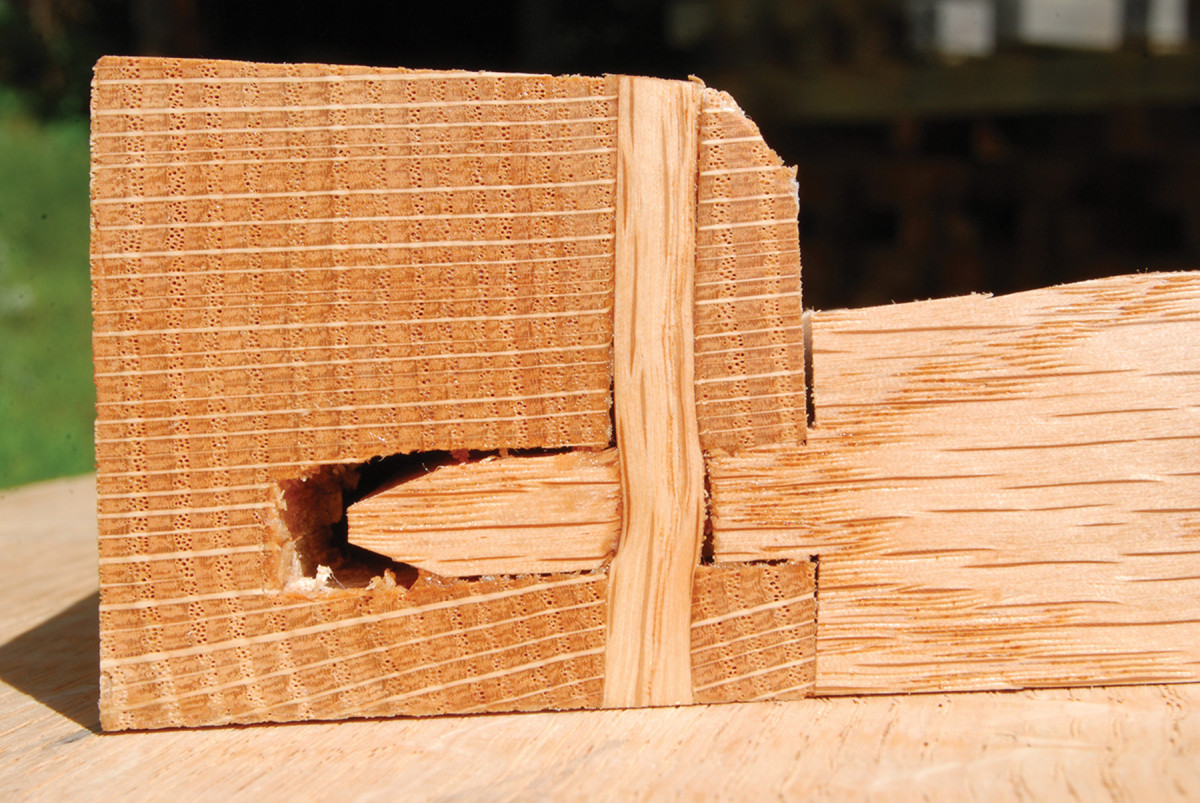
Built to last. The section cut above of a drawbored mortise-and-tenon joint shows how the peg snakes through an offset to pull together the mortise and the tenon.
Drawbore it for a joint that will last centuries.
I once had a visitor to my shop remark that he’d like to see a book about all the types of joints that I use. I told him it’d be a pretty short book: One page for the rabbet joints I use in boxes and drawers, and another for the mortise and tenon.

A 17th-century peg from a Braintree, Mass., joined chest.
I never really learned to cut dovetails until I’d been a furniture maker for more than 20 years. But I lean toward fanaticism and, early on, 17th-century joiners’ work captivated me completely. And it was there that I learned just how many places you could use the mortise-and-tenon joint.
It’s a joint that can take you from the cradle to the grave, almost. House frames and the wainscoting around the walls. Cabinet doors in the kitchen. Cradles, chairs, tables, chests and cupboards. Stools. Benches.
You can picture most any piece of furniture in the stile-and-rail format. Drawers are the exception; I’ve never heard of, and wouldn’t want to see, a drawer made with mortises and tenons.
Hence the rabbet. While some are dovetailed, most 17th-century drawers in English work are just rabbeted and fixed with nails. It’s not the showiest technique, but if a drawer lasts 350-plus years, is it really poor construction?
Square Pegs, Round Holes
The oak boxes I make are based on studies of period examples. These are sometimes called “Bible boxes” – a term I despise. There was a period term for these items that was quite straightforward: a “box.”
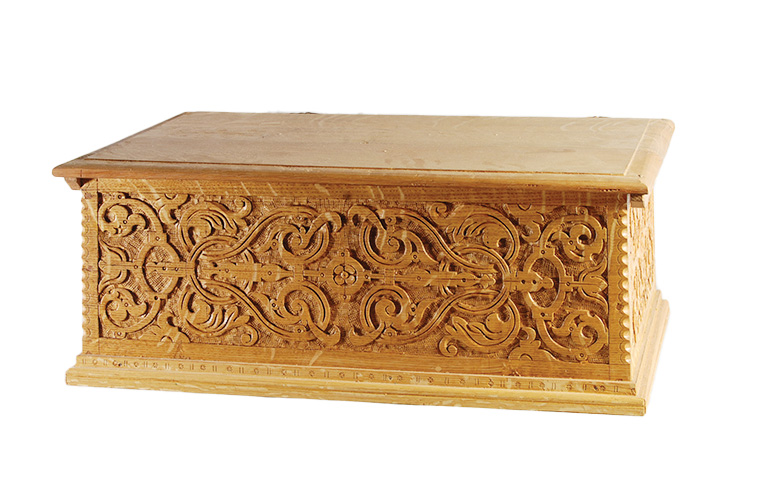
A box. In the 17th-century-style work I do, boxes aren’t typically dovetailed. They’re rabbeted, then nailed.
They are almost always rabbeted, usually secured with iron nails through each corner, and use no glue. A small percentage used rabbets that were glued and pinned; square pegs in round holes make a tight fit.
Rarely, you find boxes like this with dovetailed corners. You’re more likely to find period boxes that feature nailed butt joints than dovetailed examples. They’re out there, but they’re quite unusual.
Wet/Dry Joint
As a chairmaker, the round mortise and tenon was the first joint I learned in detail. How many ladderback chairs have been made on this earth? A lot.
Windsors, too, use a round mortise and tenon. I’ve formed these with Forstner bits, spoon bits, auger bits and more. All of them worked. Turned tenons, shaved tenons, even whittled. The heart of the ladderback’s mortise and tenon is the wet/dry joint – a super-dry tenon in a mortise that still contains moisture. Shrinking mortise, swelling tenon – it works like a charm.
The tapered, round mortise and tenon used in a Windsor chair seat-to-leg joint is another nifty item. Bore the mortise, ream it, then turn a tapered tenon. Sit on it and presto! Tighter and tighter it goes. Mostly these are still split and wedged from above, sort of a belt-and-suspenders approach.
Joint for a Lifetime
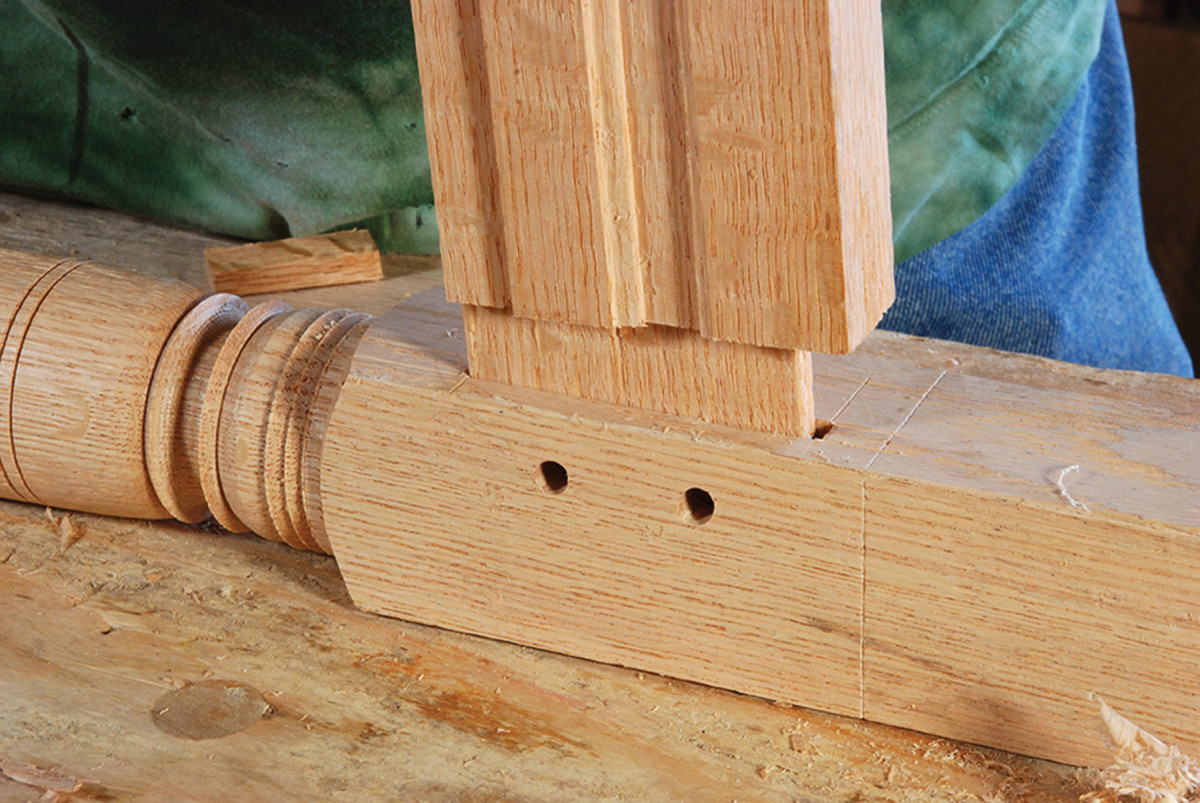
Fit. First, show the tenon to its mortise.
But bored mortises and shaved or turned tenons won’t get you a chest or cupboard. When I began to study joinery, I saw that the rectangular mortise and tenon was the entire basis for the craft.
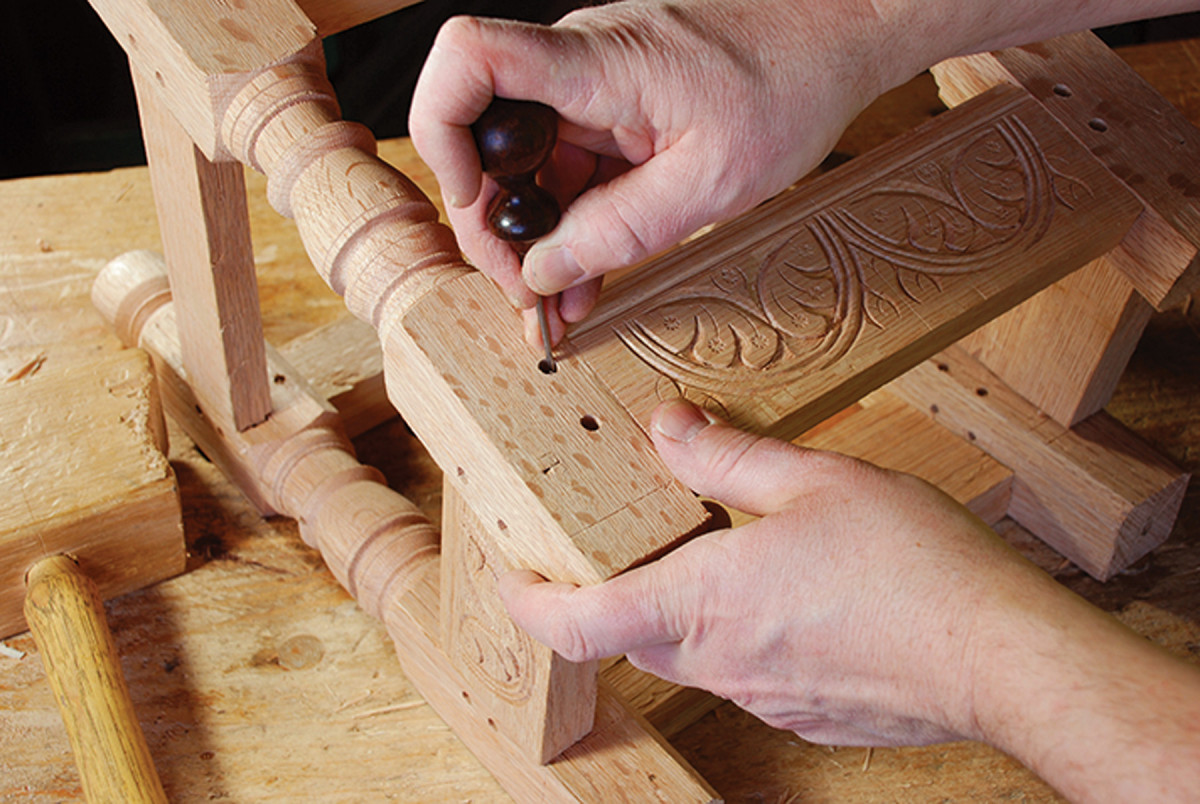
Mark. Use an awl to mark the hole location on the tenon. Then remove the tenon and offset the center point about 1⁄8″ toward the shoulder, and drill.
I had made mortise-and-tenon joints before this; some of my earliest non-period, non-chair works were bookcases that used through mortise and tenons, fastened with a wedge.
Later, I employed these again in our bedstead – not a traditional 17th-century technique unless you’re building a Dutch barn. I even remember once or twice making fox-wedged joints.
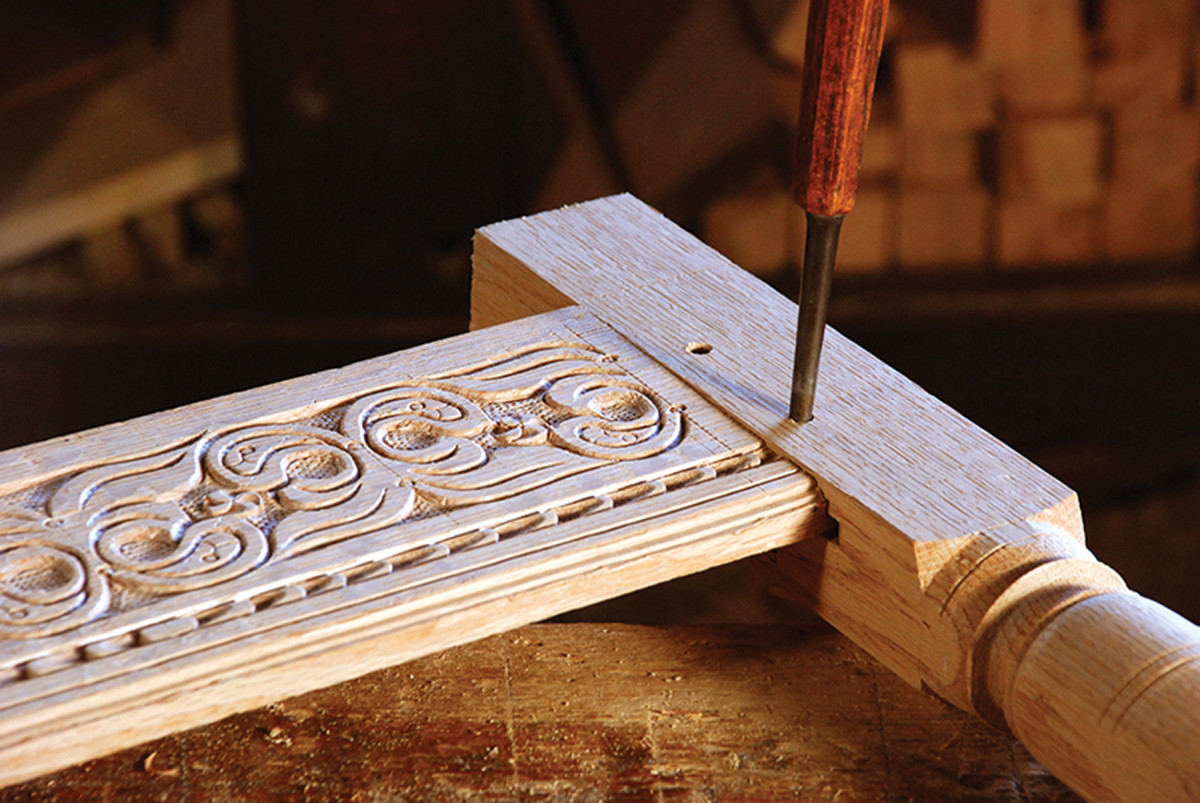
Pinned. Use a drawbore pin to test-fit the joint after drilling the holes in the tenon.
But my favorite is the drawbored version. Even beginners can make joints that will last a lifetime with this technique. You need a couple of chisels, a backsaw, a mortise gauge, and a brace and bit – all basic tools that most shops have, or should have.
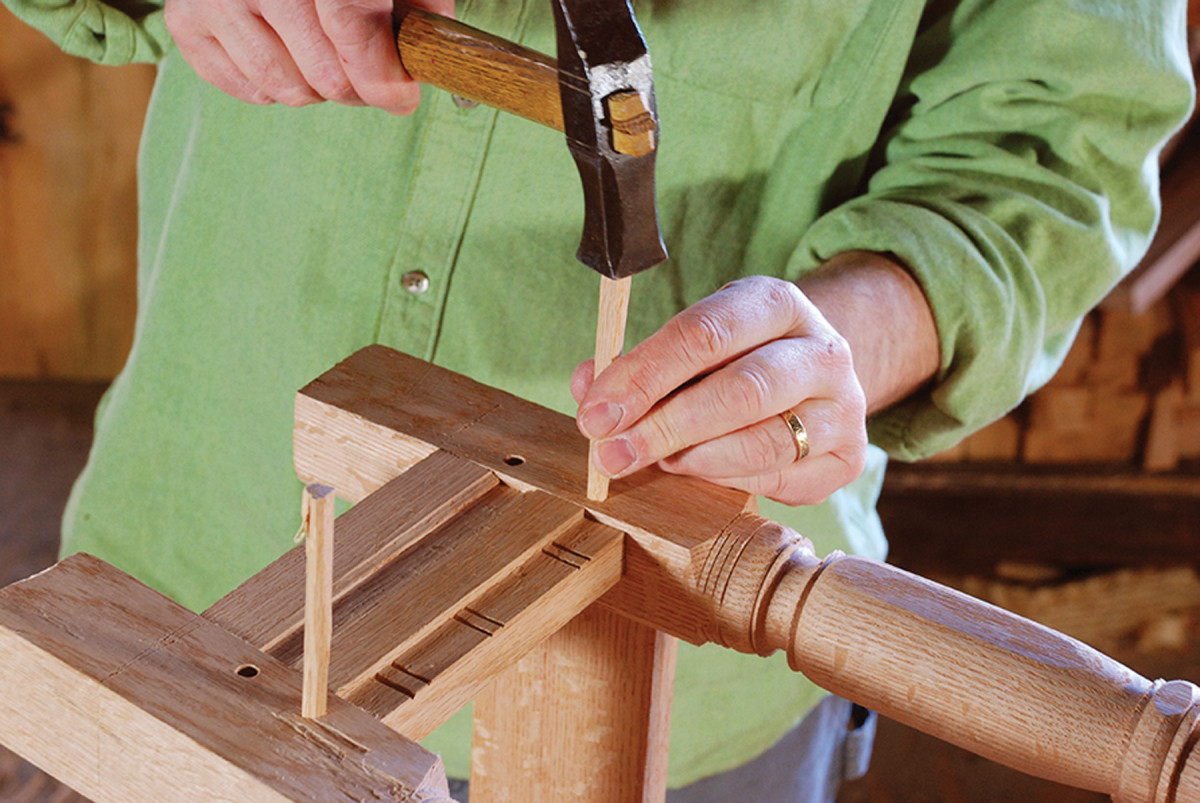
Pegged. Now drive a peg (preferably of riven oak) into each hole.
And you need practice. For my joints, I use no glue, but tapered wooden pins to hold it together. I’ve used the same format, but slightly different techniques in timber-framing buildings. That was actually where I first learned about drawbored joinery.
Dovetails? Meh
Dovetails, of course, have their place, and now they are a sort of gold standard for woodworking joints. I think the emphasis on the “perfectly cut” dovetail is more a reaction against machine-made work than any measure of a craftsperson’s abilities.
Roy Underhill has remarked that the dovetail joint is incredibly strong in one direction, but can come loose in the other. Maybe that’s why 17th-century versions of the joint are often nailed through the tails into the end grain of the pin board. The belt-and-suspenders method of dovetailing: Leave nothing to chance.
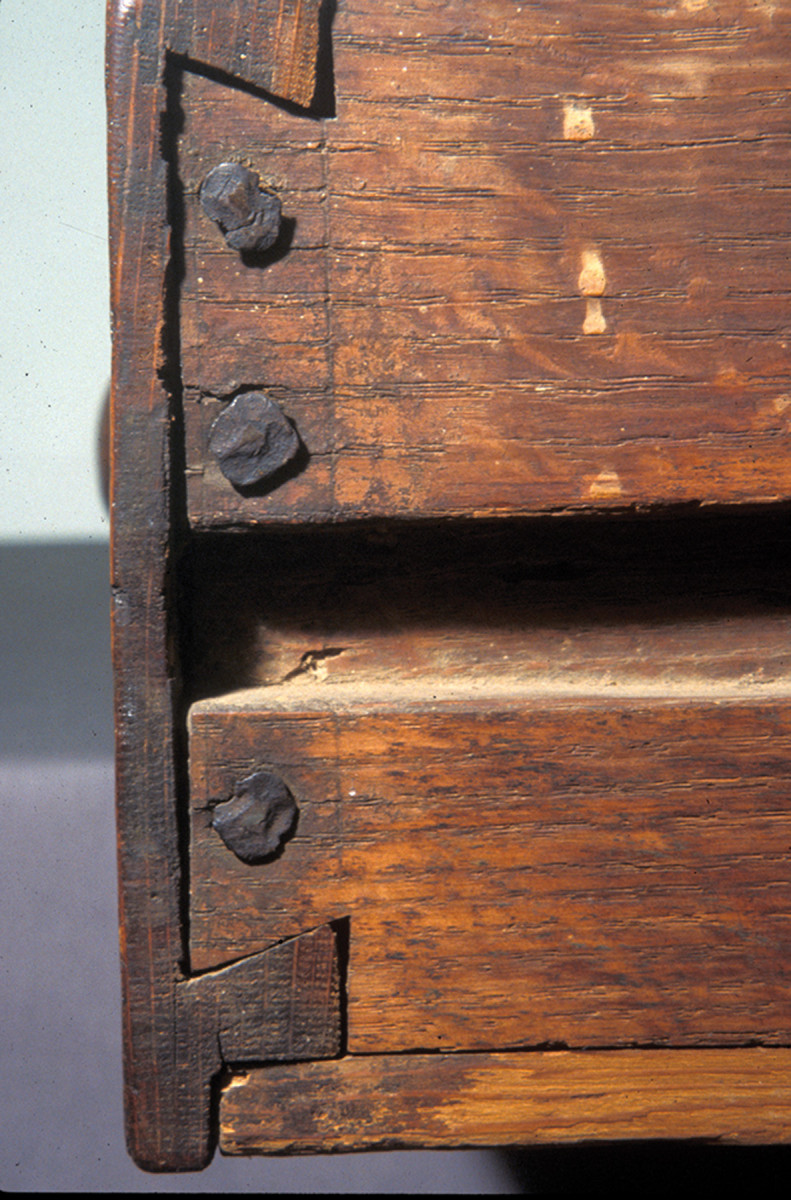
Nailed tails. While they are rare, there are a few surviving examples of 17th-century dovetails. But most feature nails through the tail board.
I did come around, and I learned to cut dovetails. I’ve made lots of boxes with that method, either just for the fun of it, or so I could delve into other disciplines beyond the English period joinery that is my specialty.
Champion Joint
But for versatility, the mortise-and-tenon joint is unbeatable. Whenever I turn someone on to their first joint, it’s always the drawbored mortise and tenon. The good ones are hooked right away. Then, 25 years later, if they’re still interested, they can fiddle with dovetails.
Here are some supplies and tools we find essential in our everyday work around the shop. We may receive a commission from sales referred by our links; however, we have carefully selected these products for their usefulness and quality.









